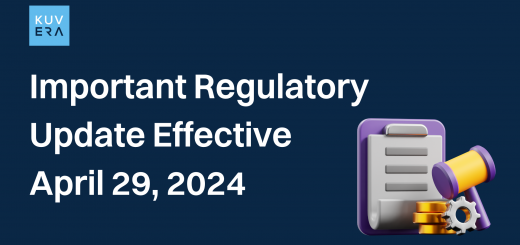What is Public Provident Fund (PPF)?
The Public Provident Fund (PPF) is a popular long-term investment option offered by the Government of India to promote savings and provide financial security to individuals. is a government-backed savings scheme introduced in 1968 under the PPF Act. It is available to residents of India and offers attractive interest rates, tax benefits, and a long-term investment horizon of 15 years, which can be extended further in blocks of five years.
Today, we’ll take a look at the various aspects of PPF, including its features, calculation methods, taxation rules, advantages, and PPF vs EPF.
Features of PPF
- Interest Rates: The government decides the interest rate for PPF every three months. For the first quarter of the fiscal year 2024-25, starting from April 1st to June 30th, 2023, the interest rate for PPF is 7.1%
- Eligibility: Any Indian resident, including minors, can open a PPF account.
- Investment Limit: Investors can deposit a minimum of Rs. 500 and a maximum of Rs. 1.5 lakh per financial year in their PPF account.
- Tax Benefits: Contributions made to PPF are eligible for tax deductions under Section 80C of the Income Tax Act. Additionally, the interest earned and the maturity amount are tax-free.
- Duration: It is a long term investment option with a minimum tenure of 15 years. This can be extended by 5 years at a time.
How is PPF Calculated?
The interest on PPF is calculated based on the minimum balance in the account between the 5th and last day of each month. The interest is compounded annually and credited to the account at the end of the financial year.
How to calculate PPF returns?
The online Kuvera PPF account calculator helps you calculate maturity amount, interest earned, total amount invested, etc in just a few clicks.
How is PPF interest calculated?
The interest in PPF is determined using a simple equation. The formula has been expressed below:
F = P [({(1+i) ^n}-1)/i]
Where:
F = Maturity Value
P = Annual Payments
i = Interest Rate
n = Number of years
For instance, if you make annual contributions of Rs 1 lakh to your PPF account for 15 years at 7.1%, your maturity proceeds would be Rs 27 lakhs at the end of 15 years.
Taxation of PPF
One of the most attractive features of a Public Provident Fund (PPF) account is its tax benefits. Contributions made to a PPF account are eligible for tax deductions under Section 80C of the Income Tax Act, up to a maximum limit of ₹1.5 lakh per financial year. This makes PPF a popular choice for individuals looking to save on taxes while also securing their future.
The interest earned on PPF deposits is completely tax-free. This means that the returns generated from your PPF investment are exempt from income tax, making it a highly tax-efficient investment avenue. The tax-free nature of PPF interest is one of the key reasons why many investors prefer it over other savings options.
The maturity amount received from a PPF account is also exempt from tax. When your PPF account completes its 15-year tenure, and you withdraw the accumulated corpus, the entire amount, including the principal and interest, is tax-free. This makes PPF an attractive long-term investment option for individuals looking to build wealth while minimizing their tax liabilities.
Advantages of a PPF Account
- Tax Benefits: As mentioned earlier, PPF offers significant tax benefits, including deductions on contributions and tax-free interest and maturity proceeds. These tax advantages make PPF a preferred choice for tax planning and wealth accumulation.
- Stable Returns: PPF offers attractive and stable returns over the long term. The interest rate on PPF is set by the government and is typically higher than the interest rates offered by savings accounts and fixed deposits in banks.
- Safety and Security: PPF is backed by the government of India, making it one of the safest investment options available. The govt guarantee ensures that your investment is secure, providing peace of mind to investors.
- Long-Term Savings: PPF has a lock-in period of 15 years, encouraging individuals to save and invest for the long term. The discipline of regular contributions and the compounding effect of interest over time help investors accumulate a sizable corpus for their future financial needs.
- Flexibility: While PPF has a mandatory lock-in period of 15 years, it also offers flexibility in terms of partial withdrawals and loan facilities. After completing five years, investors can make partial withdrawals from their PPF account for specific financial needs. Additionally, PPF accounts can be extended in blocks of five years after maturity, providing continued tax benefits and investment growth opportunities. It can be opened with just Rs. 100.
EPF vs. PPF
While both the Employee Provident Fund (EPF) and Public Provident Fund (PPF) are popular savings instruments in India, they serve different purposes and cater to different categories of individuals.
EPF (Employee Provident Fund)
- EPF is a mandatory retirement savings scheme for salaried employees in India.
Contributions to EPF are made by both the employee and the employer, with a fixed percentage of the employee’s salary being deducted each month. - EPF contributions earn a fixed interest rate determined by the government, which is typically higher than that of PPF.
The primary purpose of EPF is to provide financial security to employees during retirement.
PPF (Public Provident Fund)
- PPF is a voluntary savings scheme open to all Indian residents, including salaried individuals, self-employed individuals, and non-working individuals.
- Contributions to PPF are made solely by the account holder, who can deposit any amount within the prescribed limits.
PPF offers tax benefits on contributions, interest earned, and maturity proceeds, making it a popular choice for tax planning and long-term savings. - The primary purpose of PPF is to encourage individuals to save for their long-term financial goals, such as retirement, children’s education, and marriage.
In conclusion, the Public Provident Fund (PPF) is a secure and tax-efficient investment option for individuals looking to build long-term wealth while enjoying tax benefits. With its attractive interest rates, flexible tenure, and safety net, PPF remains a preferred choice for many investors in India.
Interested in how we think about the markets?
Read more: Zen And The Art Of Investing
Watch here: Index funds explained
Start investing through a platform that brings goal planning and investing to your fingertips. Visit kuvera.in to discover Direct Plans and Fixed Deposits and start investing today.











